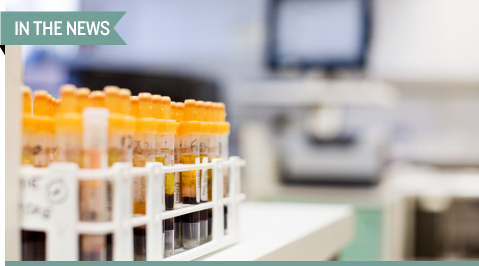 iStock.com / alvarez
iStock.com / alvarez
Laboratory-developed tests (LDTs) are just as proficient as in vitro diagnostics in detecting common types of cancer mutations. Researchers made this determination after conducting an analysis of nearly 7,000 tests, publishing their results in JAMA Oncology.
“The debate about the role of the Food and Drug Administration (FDA) in the regulation of laboratory-developed tests (LDTs) has focused attention on the analytical performance of all clinical laboratory testing,” the study’s authors summarized. To gain more insight on LDT performance, they decided to compare these tests against FDA-approved companion diagnostics (FDA-CDxs), also known as vitro diagnostics.
Researchers analyzed the performance of 6,897 tests from laboratories participating in the College of American Pathologists (CAP) Proficiency Testing (PT) for BRAF, EGFR, and KRAS, oncology analytes used often by both LDTs and FDA-CDxs. Using CAP standards, they compared accuracy and preanalytic practices of the laboratories and found that both types of tests exceeded 97% accuracy across the three cancer genes.
“Rare variant-specific differences did not consistently favor LDTs or FDA-CDxs,” according to the researchers. There were just a few instances in which discordances were reported: LDTs overall didn’t perform as well as FDA-CDxs for EGFR, whereas the FDA-approved tests were inferior to LDTs for em>BRAF mutations.
In another important finding, the researchers discovered that at least 60% of the participating labs had adapted an FDA-CDx test to the point that it changed the classification to an LDT. According to the researchers, labs did this to “allow for a greater breadth of sample types, minimum tumor content, and instrumentation.” From a regulatory perspective, the data suggest that there’s not as much of a difference between FDA-CDxs and LDTs than previously thought.
“These modifications appear to be driven by the exigencies of real day-to-day clinical practice that requires altering the assays to meet the needs of a variety of clinical situations that may not be accommodated by the FDA-approved protocol,” said Annette Kim, MD, PhD, an associate pathologist at Brigham and Women’s Hospital’s Department of Pathology, Boston, in a statement.
The high marks on LDT proficiency are significant, given the scrutiny these tests have experienced over their reliability. FDA for some time has advocated for increased oversight of LDTs, claiming that they should be regulated as medical devices. AACC’s position has been that LDT regulation should remain under the purview of the Centers for Medicare and Medicaid Services (CMS), except for high-risk tests that call for both FDA and CMS oversight.
“Laboratory Developed Tests provide timely, accurate, quality testing for many conditions for which no commercial test exists or when an existing test does not meet current clinical needs,” according to the association’s position statement.
The study’s results give credence to CAP proficiency testing, “and should make all of us who are clinicians sleep better at night,” Daniel F. Hayes, MD, FASCO, asserts in a related editorial. That said, the sample size of this analysis is somewhat limited in that it only represents lab pathologists who participate in CAP PT, he wrote.
Detecting genetic aberrations among these three cancer genes calls for a straightforward type of test, Hayes continued. “Therefore, although it is reassuring that different laboratories using different techniques and assays usually came up with the same results for BRAF, EGFR, and KRAS, these results cannot be extrapolated to other, more complex tumor tests” he wrote.
Hayes also questioned the results on the basis that only a small percentage of the participating labs—just 15%—had actually used FDA-CDxs, with some modifying the tests to meet their needs. This practice of modifying tests raises a question about analytical validity, Hayes told CLN Stat. “If a test is a CDx, but if you don’t run it according to the manufacturer’s instructions, do you know if it’s as accurate as the one that the company put all the expense and time into optimizing? One assumes that it is still accurate, but you don’t know,” he noted.
LDTs play an important role in patient care, but clinicians can’t always guarantee their accuracy and appropriate usage, Hayes concluded in his editorial. “I, for one, will continue to call for collegial and constructive measures to improve, and in many cases further regulate, tests that are so important for our patients,” he noted.